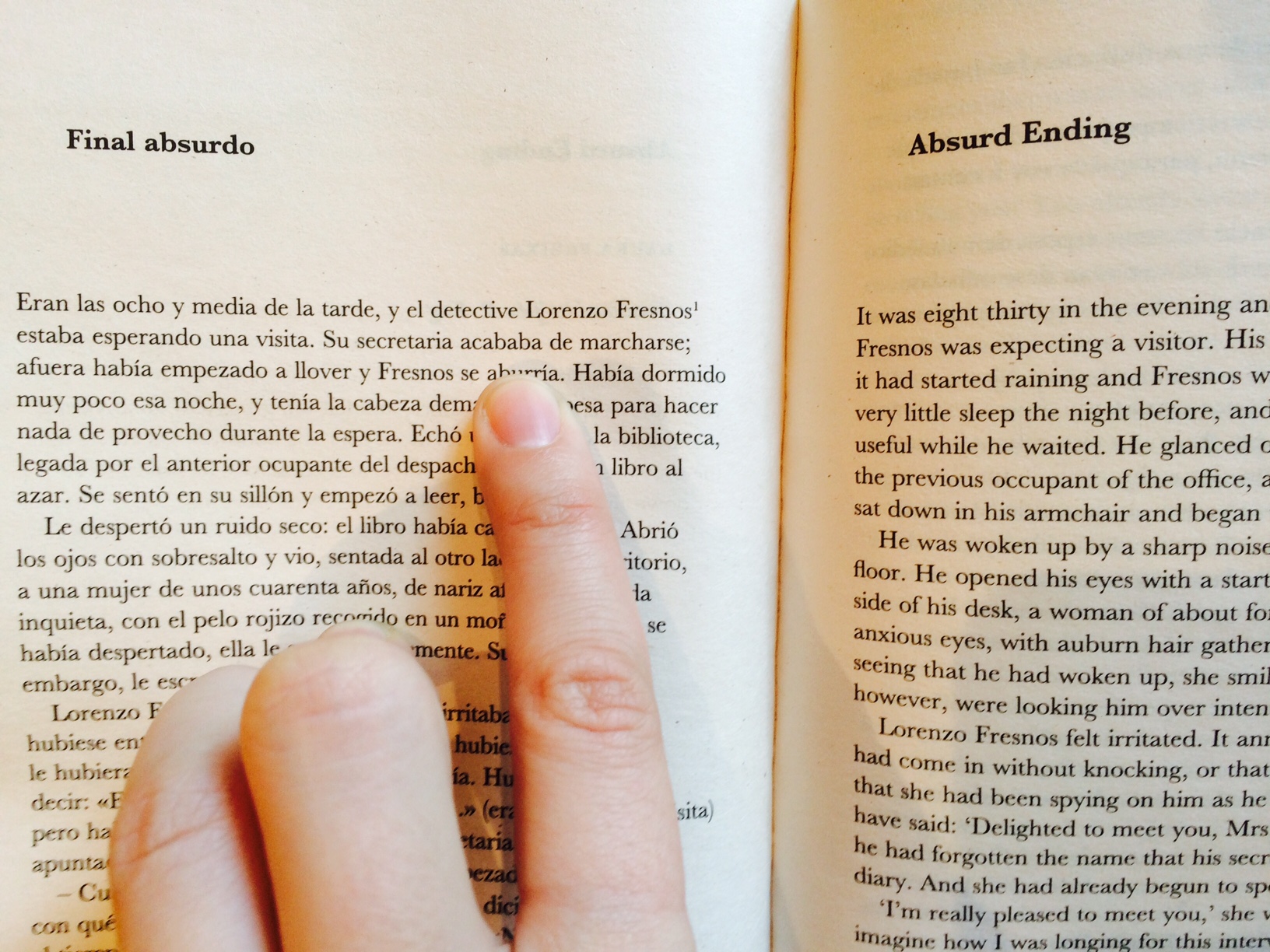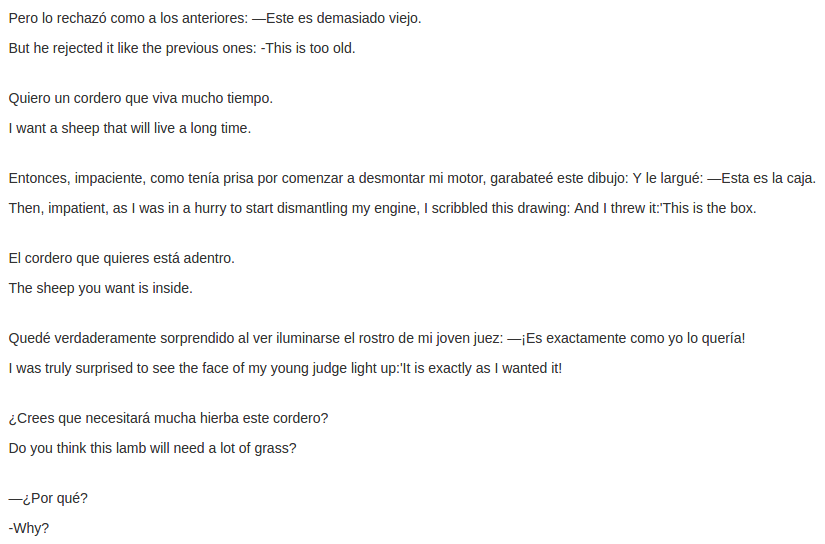Reading a novel in any language is probably one of the most tried and true methods to really understanding that language. It’s no different when trying to learn a language. Many advanced language learners and teachers swear by it. And they aren’t wrong.
You probably already know this as well. When you were a child, you most likely read countless books. Whether they were books like Harry Potter, Nancy Drew, Goosebumps, or comic books, you unknowingly mastered English by reading.
You are living proof that the method works and I bet it would work for Spanish too!

However, there are a couple of roadblocks that people often have when first trying to read books in Spanish. These roadblocks usually make people give up, so we need to find solutions for them before we can fully use this method.
Roadblock 1: Finding Books in Spanish
The first roadblock is finding adequate reading material in Spanish. Unless you have one of those book superstores like Powell’s City of Books in Portland, you probably aren’t going to find a great selection of books in Spanish in your neighborhood.
 Powell’s City of Books
Powell’s City of Books
We’ll have to look online and find ebooks to help fill out your library. There are also several apps that help us in this regard as well so we’ll explore them too.
Roadblock 2: Understanding What You are Reading
The second roadblock is that new learners don’t have a strong enough vocabulary in Spanish to even get the gist of what a sentence means. It’s like having the reading level of a two year old.
I’ve been there and it sucks.
Plus this time you can't ask your parents to help you read. “Hey Mom, can you tell me what this means?” doesn't work any more I'm afraid.
But don't fret, there are some amazing applications out there that will help us do just that. We’ll explore those in detail to show you why they work and how they’ll get you reading fluently in no time.
Pro-tip: You must exercise your listening skills too.
Before we go on, I want to talk about one serious issue that often comes up with Spanish learners who learn by solely reading books. Some will make the mistake of diving into the written form of the language without ever learning correct pronounciation and how words sound in Spanish.
They jump right into books, build a great vocabulary and then realize that they can’t understand a single word of spoken Spanish nor can they be understood when they speak. It's as if they went to the gym and exercised only one arm.
 That’s not a good look.
That’s not a good look.
What makes it worse is that they ended up learning and reinforcing improper pronouciation of words with their inner English voice! And it takes a lot of work to undo all of that bad practice, almost as long as it took to get there.
In order to NOT fall into this hole when reading a book in Spanish, many language teachers and expert learners recommend that people listen to a Spanish audiobook of the novel while following along with the written text, or even removing the written text altogether.
It'll help you understand the correct pronounciation of Spanish and you’ll get the same amount of words per minute learning as you usually would from reading. Plus it'll further your listening comprehension and even speaking pronounciation as you’ll intuitively know if what you are saying sounds wrong.
Like many others and most likely you, I learn Spanish so that I can travel and converse in the language. Because of this, listening comprehension and pronounciation are essential when learning Spanish. Therefore, I’ll be sharing resources that best fit this way of learning.
Clearing Roadblock 1: Finding books in Spanish
First, do we know what we are looking for? Just to recap, we want to find books preferably in audiobook and written form so that we can work on listening comprehension as while we read.
Audiobooks can be a bit harder to find so I suggest that you first start your search there. Once you find several audiobooks of your liking, it’ll be easy to find their respective written version.
Best Resources for Audiobooks in Spanish:
Paid:
- Audible
- Owned by Amazon, Audible has a vast array of audiobooks available in Spanish. Whether you want to listen to Harry Potter, the Da Vinci Code, or books written by Spanish and Latino authors, you can find them all here.
- Audible has great web and phone apps to make it easy to listen anywhere. You can either buy the books outright or pay a monthly subscription where you get discounts and a free book each month.
- iTunes
- Apple has a nice collection of audiobooks for purchase as well. So if you have an iPhone or a Mac, you should definitely check them out.
Free:
- Librivox
- Librivox is a great free resource to find audiobooks in the Public Domain. You’ll find a lot of classics in their collection.
- While there isn’t a dedicated app for them, you can simply go to their site and download the mp3 files and upload them to your listening device.
Best Resources for Books in Spanish:
Paid:
- Amazon
- You probably know about Amazon so I don’t have to explain why it is such a great resource.
- iTunes Books
- Great resource if you are an Apple person and want an alternative to Amazon.
- Google Play Books
- Great resource if you have an Android phone and want an alternative to Amazon.
Free:
- Project Gutenberg
- This amazing free resource has countless Public Domain books available for download.
- It pairs very well with Librivox for audiobooks.
Clearing Roadblock 2: Understanding What You Are Reading
The biggest issue with reading in Spanish is that you most likely don’t know enough words to understand the meaning of sentence. The optimal way to fix that would be to have the English definition just a glance away.
The typical solution is to have a dictionary nearby. But it’ll take way to long to look up each word in a Spanish to English dictionary so let’s find a better approach. Since I've already researched ways to fix this issue, I’ll lay out the two best strategies that I’ve found.
Strategy 1: Use a Supplementary English Text
The first method is to use an accompanying English book text as you read and listen to the book in Spanish. With it, you can follow along as you read and when you get stuck, you can get the English meaning and extra context for the Spanish phrase or sentence. This is much more useful than the isolated single word meanings you'd find in a dictionary.
However, this can be a bit difficult to do in practice. If you trying to use two books, you would have to have both books open at the same time at the same place. And trying to find your place in the Spanish book vs. the English book can be quite tricky.
Luckily, there are methods and resources that alleviate this problem, the most effective being parallel texts. Parallel texts align the Spanish book’s text with the English book’s text, either paragraph by paragraph or sentence by sentence. This makes it extremely simple to see the meaning of the Spanish text by allowing you to glance over at the matching English text. Here’s an illustration of a paragraph by paragraph parallel text:
 Paragraph by paragraph format
Paragraph by paragraph format
As you can see, you can easily read the Spanish and then quickly refer to the English side if you don't know or are confused about what you read. It can still be a bit hard to find your place with paragraph by paragraph parallel texts, so I recommend trying to find them in sentence by sentence format. Here's a good illustration of that:
 Sentence by sentence format
Sentence by sentence format
Parallel texts are a great way to move up the Spanish learning curve at your own pace. Unfortunately they aren't always easy to find, so I've curated some of the best resources that I've found through the years.
Best Paid Resources for Parallel Texts with Matching Audio:
- The Dive into Español App
- I created this app because I wanted to build on the best learning method that I found (Listening-Reading) and make it usable for myself and others from anywhere.
- Contains over 35 full-length classic novels with both Spanish and English parallel text in sentence by sentence format and matching Spanish audio.
- Each sentence is visually highlighted as it is read by the audio so you never lose your place.
- Largest collection of its kind with 500+ hours of audio.
Best Free Resources for Parallel Texts with Matching Audio:
- Alba Learning
- Good resource that has many short parallel texts as well as matching Spanish audio.
- Learn Spanish with Bilingual Stories
- Another good resource with several chapters of classic novels in parallel text form.
- Dual Texts Bilingual Magazine
- A magazine with articles in parallel text with audio.
- The Spanish Blog's Guide to Spanish Cities
- Parallel text guides to Spanish cities
Best Paid Resources for Parallel Texts without Audio:
- Penguin Parallel Texts
- A collection of short stories in parallel text format.
- Speaking Latino's Recommended List
- A great list of parallel texts for beginners to advanced language learners.
Best Free Resources for Parallel Texts without Audio:
- Bilinguis
- Collection of five full length novels in parallel format.
Strategy 2: Use an In-App Translation Tool
In-app translation tools allow you to hover over a word or phrase in Spanish and see the English translation of it. It’s usually a machine translation driven by Google or Bing’s Translation engines. These can be installed via browser extensions and also are natively built into some reading apps.
I personally like to use parallel texts for reading novels, but in-app translation tools work really well for reading any web content like the news or blogs.
Readlang: Book reading app with in-line translation highlighting
- One of my favorite apps when I first got into reading in Spanish.
- Its library content is community driven and has a good amount of novels. You can also upload your own content.
- The translation tool is really easy to use; simply hover over a word or phrase and it'll automatically translate.
Use Kindle for your ebooks on the go
- The Kindle reader and app have built in multi-language dictionaries that you can use to see the definition of any word.
- This blog post is a great guide showing you how to setup this feature.
Transover: Best browser extension for reading web content
- Once installed, simply highlight over the Spanish phrase and you’ll see the direct translation to English.
Enough Talk. Time to Start Reading!
There you have it. Now you have the resources you need to begin reading in Spanish. Honestly I’ve found it to be one of the most effective and fun ways to learn Spanish. It’s astonishing how much Spanish you can learn while being immersed in an enchanting story.
Immersion is one of the best techniques for learning Spanish, so I wholeheartedly recommend this and other actions that get you immersed in Spanish.
If you are curious of what else you can do, check out my guide on getting yourself completely immersed in Spanish without leaving your home.
Care to share?
What’s your favorite book you've read in Spanish, and where did you find it? Share it with your fellow Spanish learners in comments section below.
comments powered by Disqus